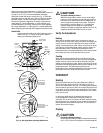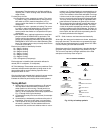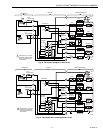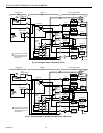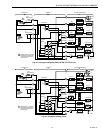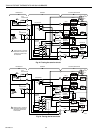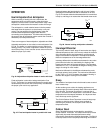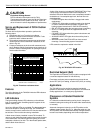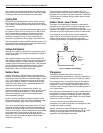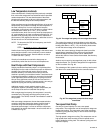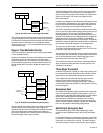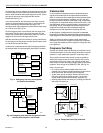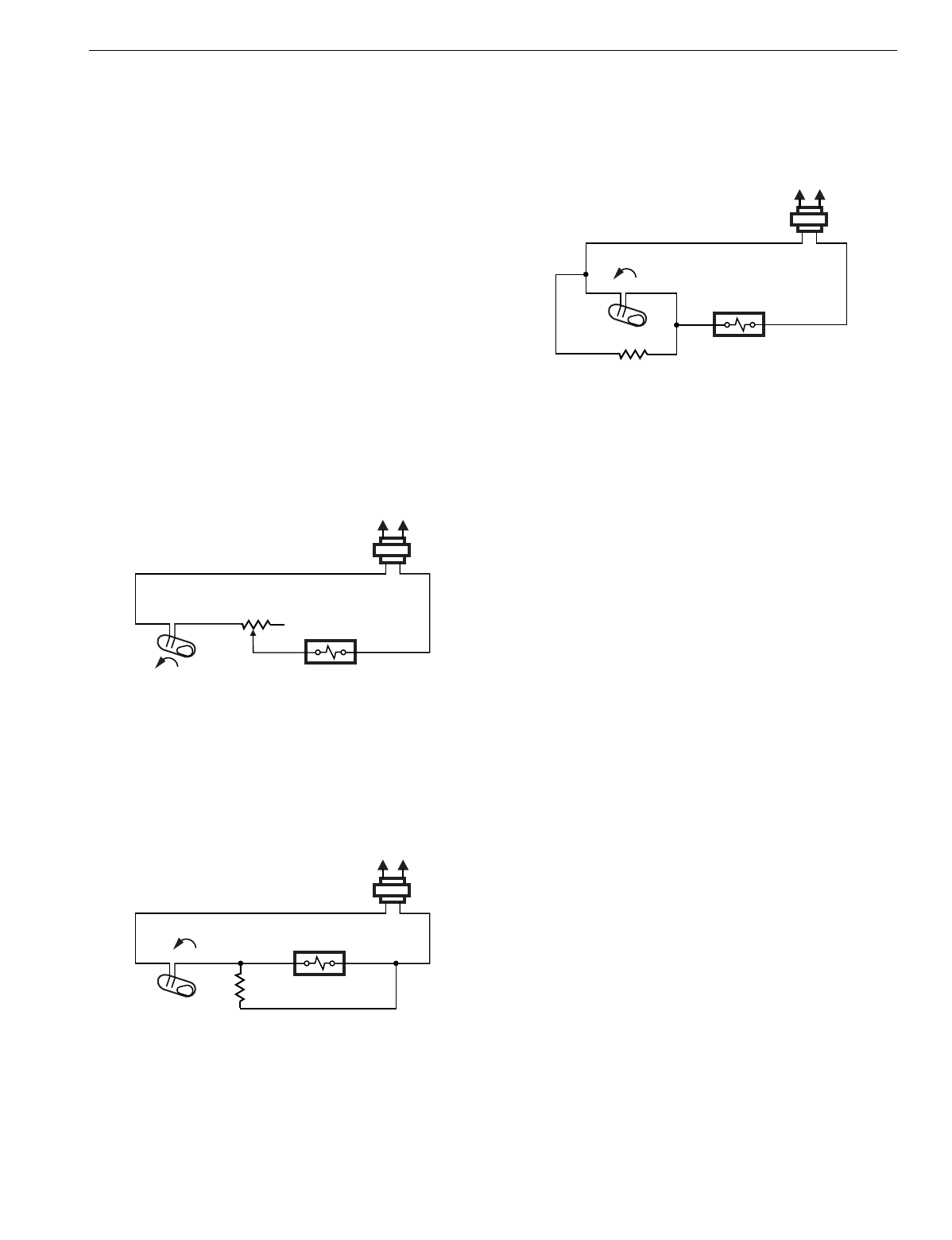
T874 MULTISTAGE THERMOSTATS AND Q674 SUBBASES
21 60-2485—8
OPERATION
Heat Anticipation/Cool Anticipation
When controllin
g
a heatin
g
unit with a thermostat, the
temperature does not remain exactl
y
at the thermostat
setpoint, but varies within a certain temperature ran
g
e. Heat
anticipation is added to the thermostat to reduce this ran
g
e.
The anticipator is a small resistive heater in the thermostat
that heats when the s
y
stem is on
(
heat mode
)
or off
(
cool
mode
)
. The heat produced b
y
the anticipator raises the
internal bimetal temperature sli
g
htl
y
faster than the
surroundin
g
room temperature. The thermostat
anticipates
the need to shut off the heatin
g
s
y
stem sooner than it would if
affected b
y
room temperature onl
y
.
There are two t
y
pes of heat anticipation, ad
j
ustable and fixed.
Ad
j
ustable anticipation is also called
current anticipation
. See
Fi
g
. 26. The heater is in series with the mercur
y
switch and
heatin
g
primar
y
. The pointer is ad
j
usted to match the current
draw of the primar
y
control, and the correct amount of heat is
added for proper c
y
cle rates.
Fig. 26. Adjustable anticipation heater in series with load.
Fixed anticipation is also called
voltage anticipation
. See
Fi
g
. 27. The heater is in parallel with the primar
y
control and is
not affected b
y
the current draw of the primar
y
. It establishes
the proper c
y
cle rate for an
y
application.
Fig. 27. Fixed anticipation heater in parallel with load.
Heat anticipators add heat durin
g
the call for heat. Coolin
g
anticipators are activated while the air conditioner is off. See
Fi
g
. 28. This heater makes the thermostat think it is warmer than
it reall
y
is, and brin
g
s it on sooner than the bimetal alone would.
Fig. 28. Internal cooling anticipation schematic.
Interstage Differential
The mercur
y
switch of each sta
g
e of heat makes at a sli
g
htl
y
different temperature; that is, the mercur
y
makes the contacts
of the first sta
g
e bulb at one temperature, and the second
sta
g
e bulb at another temperature. The difference between
these two temperatures is the
interstage differential
.
Intersta
g
e differential is the difference between the two make
points when the bulbs are controlled b
y
the heatin
g
of the
bimetal and the action of the heat anticipator. The intersta
g
e
differential is 1.9°F
(
1°C
)
between the sta
g
es of heatin
g
or the
sta
g
es of coolin
g
for most models.
Mechanical differential is the difference between the make
and break points of each switch. The mechanical differential
for the T874 is 1°F
(
0.6°C
)
between the sta
g
es of heatin
g
or
between the sta
g
es of coolin
g
for most models.
Droop
The addition of anticipator heat to the bimetal causes a control
factor called
droop
.
As the weather
g
rows colder, the heatin
g
appliance must
operate lon
g
er and more fre
q
uentl
y
. More heat must be added
to the bimetal. The bimetal now thinks it is warmer than it
reall
y
is, and actual room temperature is controlled at a lower
temperature than the setpoint indicates. At 100 percent heat
load, this droop can be si
g
nificant.
The C815A Outdoor Reset Thermistor is used in heat pump
s
y
stems to minimize droop. Without some method of
counterin
g
this situation, the occupant could notice the
temperature offset.
Outdoor Reset
Some T874/Q674 models are intended for use with the
C815A Outdoor Thermistor. The outdoor thermistor provides
si
g
nificantl
y
improved thermostat performance when
compared to conventional multista
g
e thermostats. The C815A
is usuall
y
located in the heat pump condensin
g
unit outdoors.
FALL
L1
(HOT)
L2
M5823
STAGE 1 HEAT RELAY
H1 ANTICIPATOR
H1
FALL
L1
(HOT)
L2
M5824
STAGE 1
HEAT RELAY
H1 ANTICIPATOR
H1
RISE
L1
(HOT)
L2
M5825
STAGE 1
COOL RELAY
C1 ANTICIPATOR
C1



